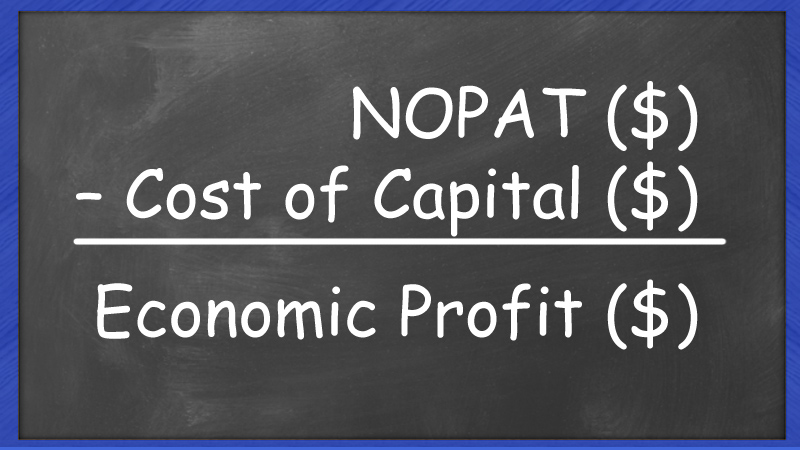Definition
Economic profit is a measure of net operating profit after tax (NOPAT), adjusted for cost of capital. Unlike percentage measures of return (e.g., ROS or ROI), economic profit is a dollar metric. It reflects not only the “rate” of profitability but also the size of the business (sales and assets).[1]
 Purpose
Purpose
The purpose of the “economic profit” metric is to show profit in dollar terms while accounting for required returns on capital invested. This gives a clearer distinction between the sizes of returns than does a percentage calculation. Increasingly, marketers are being made aware of how their decisions influence the amount of capital invested or assets employed.
First, sales growth almost always requires additional investment in fixed assets, receivable, or inventories. Economic profit helps determine whether these investments are justified by the profit earned.
Second, marketing improvements in supply chain management and channel coordination often show up in reduced investments in inventories and receivables.
In some cases, even if sales and profit fall, the investment reduction can be worthwhile. Economic profit is a metric that will help assess whether these trade-offs are being made correctly.
Construction
Economic Profit ($) = Net operating profit after tax ($) – Cost of capital ($)
Cost of Capital ($) = Capital employed ($) x Weighted average cost of capital (%)
Note: This metric has many names, some of them trademarked as brands. (e.g., Economic Value Added or EVA® is Stern-Stewart’s trademark)
References
- ^ Farris, Paul W.; Neil T. Bendle; Phillip E. Pfeifer; and David J. Reibstein (2010). Marketing Metrics: The Definitive Guide to Measuring Marketing Performance (Second Edition). Upper Saddle River, New Jersey: Pearson Education, Inc.




